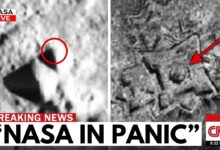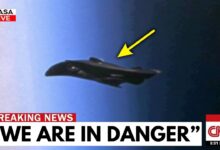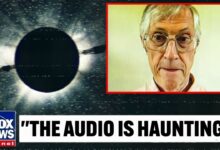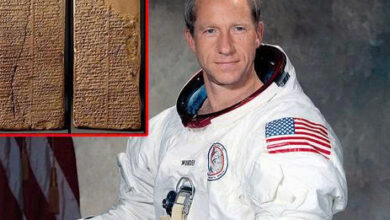What Actually Happened To Amelia Earhart?
Amelia Earhart – The Fateful Flight and the Physics Behind It
On the morning of July 2, 1937, the first light of dawn found Amelia Earhart deep over the Pacific, straining to locate a pinprick of land called Howland Island.
Through the crackling static of her radio came her urgent report:
“We must be right near you, but we can’t see you. Fuel is running low. Unable to make contact by radio. We are flying at 1,000 feet.”
Below her, there was nothing but a flat, endless expanse of water.
A World Record in the Making
Earhart was attempting what no woman had ever done: a flight around the world close to the equator — a route far longer and more difficult than previous circumnavigations. The leg from Lae, New Guinea to Howland Island was the most dangerous: nearly 4,000 km over open ocean, with no alternate landing strips within 1,000 km.
Her Lockheed Model 10E Electra had been heavily modified. The passenger seats were removed and replaced with additional fuel tanks, extending the maximum range to about 7,200 km under ideal conditions. But these were far from ideal: strong headwinds were far worse than forecast, eating into both range and time.
Navigation would be everything. A miscalculation of even 50 km could mean sailing past Howland into the void.
The Tools of the Journey
Navigator Fred Noonan relied on two main techniques:
-
Dead Reckoning – estimating position from speed, heading, and wind correction.
-
Celestial Navigation – measuring angles between celestial bodies (the Sun, Moon, or stars) and the horizon, then using tables to determine position.
Both methods accumulated small errors over time, especially with unreliable wind data. To reduce these errors, Earhart planned to use radio navigation — with the help of U.S. Navy ships stationed along her route, especially the Coast Guard cutter Itasca, anchored off Howland Island.
Earhart’s Antennas and the Science of Finding a Signal
Earhart’s Electra carried five antennas:
-
Trailing Wire Antenna – 76 m long, for low-frequency Morse transmissions (400–500 kHz).
-
Top and Belly Antennas – for high-frequency voice communication (3,105 and 6,210 kHz).
-
Loop Antenna + Sense Antenna – for direction finding (DF).
The loop antenna worked by finding the “null” point — the position where a signal dropped to its weakest. This null line pointed directly toward or away from the transmitter. The sense antenna resolved the 180° ambiguity, allowing pilots to determine the true bearing.
The First Attempt and a Setback
This was not Earhart’s first try.
In March 1937, she, Noonan, and radio expert Harry Manning set out westward from California to Hawaii. Manning successfully used the loop antenna to home in on radio beacons. But during the Hawaii-to-Howland takeoff, the Electra’s landing gear collapsed. The aircraft skidded to a halt, badly damaged.
Months of repairs followed. When the second attempt began in June 1937 — this time eastbound — Manning did not return. Earhart would now depend entirely on Noonan for navigation.
Approaching Howland – Missteps Multiply
By early morning on July 2, Earhart was in radio contact with the Itasca. At 6:15 a.m. local time, Itasca heard her say:
“Please take a bearing on 3105. We’ll whistle into the mic. We are about 200 miles out.”
But there was a fatal flaw:
Direction-finding could only work on low frequencies (around 270–550 kHz). Earhart’s transmission on 3,105 kHz was in the high-frequency range, where ionospheric reflections made bearings wildly inaccurate.
The Ontario That Never Called
The USS Ontario, stationed along her route, could have provided a DF signal. Earhart had telegraphed a request for it to transmit at specific times — but the message never reached the ship. The Ontario never transmitted, and they passed each other in the night.
Equipment Problems
To make matters worse, Earhart’s belly antenna — likely damaged on takeoff from Lae — meant she could not receive many critical low-frequency signals, including wind warnings.
Clock Confusion
Scheduling transmissions was a nightmare because three time zones were in play:
-
Earhart – Greenwich Civil Time (GCT)
-
Itasca – GCT – 11.5 hours
-
Howland – GCT – 10.5 hours
Their “on the half-hour” listening plans didn’t align. Often, Earhart and Itasca transmitted at the same time, blocking each other.
The Fatal Frequency Error
Before departure, Itasca asked what frequency to use for bearings. A radio operator in Lae suggested “750 meters” (≈400 kHz). Earhart mistakenly passed this on as 7,500 kHz — twenty times too high.
No one corrected her, even though Commander Thompson of the Itasca knew her DF system could only work between 200–1,500 kHz.
The Final Words
At 7:42 a.m., Itasca heard Earhart’s voice, strong but strained:
“We must be on you but cannot see you… gas is running low.”
Ten minutes later:
“We are circling but cannot hear you. Go ahead on 7500.”
Itasca transmitted Morse “A” on 7,500 kHz. Earhart tried to get a null reading — but at such a high frequency, the signal bounced unpredictably, making direction-finding useless.
Her last transmission came just before 9:00 a.m.:
“We are on the line 157–337… running on line north and south.”
Her voice was near breaking. Then — silence.
Aftermath
Earhart and Noonan likely ran out of fuel within hours and ditched into the Pacific. The massive search — equivalent to nearly $100 million today — found no trace of the plane or crew.
Why It Happened
The tragedy boiled down to two fatal gaps:
-
Lack of Technical Knowledge – Earhart didn’t fully understand her radio and DF limitations.
-
Lack of Procedural Discipline – Commander Thompson didn’t correct known errors in her plan.
With the right frequency, clear timing, and functioning equipment, she almost certainly could have made Howland Island. Instead, history was left with one of aviation’s greatest mysteries — and an empty horizon where Amelia Earhart was last heard.




